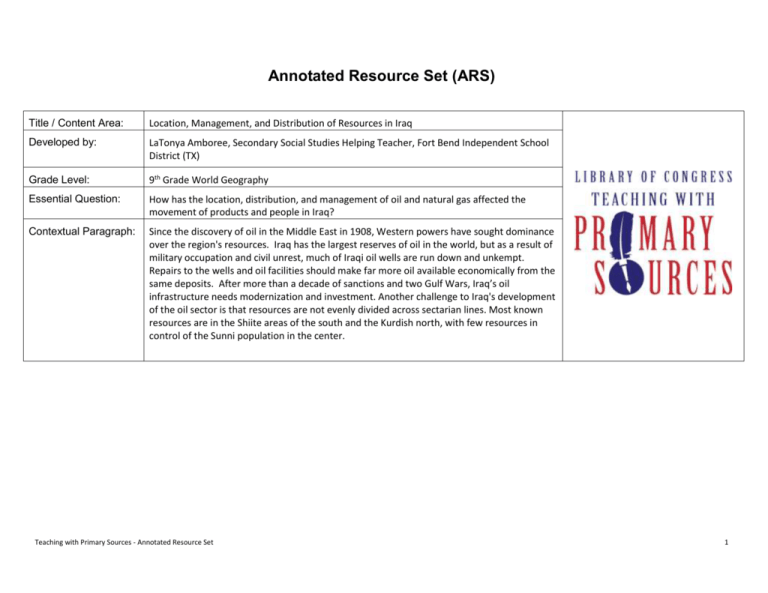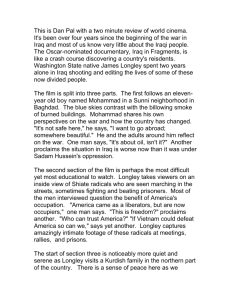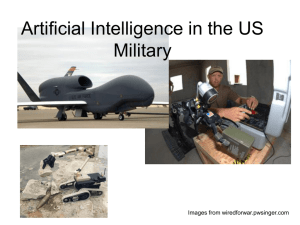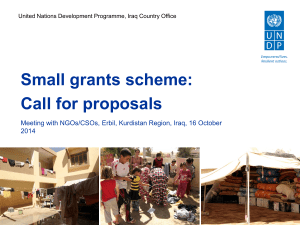Location, Management, and Distribution of Resources in Iraq
advertisement

Annotated Resource Set (ARS) Title / Content Area: Location, Management, and Distribution of Resources in Iraq Developed by: LaTonya Amboree, Secondary Social Studies Helping Teacher, Fort Bend Independent School District (TX) Grade Level: 9th Grade World Geography Essential Question: How has the location, distribution, and management of oil and natural gas affected the movement of products and people in Iraq? Contextual Paragraph: Since the discovery of oil in the Middle East in 1908, Western powers have sought dominance over the region's resources. Iraq has the largest reserves of oil in the world, but as a result of military occupation and civil unrest, much of Iraqi oil wells are run down and unkempt. Repairs to the wells and oil facilities should make far more oil available economically from the same deposits. After more than a decade of sanctions and two Gulf Wars, Iraq’s oil infrastructure needs modernization and investment. Another challenge to Iraq's development of the oil sector is that resources are not evenly divided across sectarian lines. Most known resources are in the Shiite areas of the south and the Kurdish north, with few resources in control of the Sunni population in the center. Teaching with Primary Sources - Annotated Resource Set 1 Resource Set Middle East oil and gas map refineries, oil- and gas-fields, and pipelines Iraq's Petroleum and Gas Infrastructure Iraq Oil Fields and Drilling Towers Iraq Country Profile Oil wells and camp of Iraq Petroleum Company Oil wells and camp of the Iraq Petroleum Company Shows oil and gas fields, pipelines, tanker terminals, and refineries on an oil and gas on the Middle East map. Includes inset of the Persian Gulf. Shows oil and gas fields and pipelines, exploration blocks, crude oil processing plants, pump stations, refineries, and tanker terminals in Iraq. Image shows oil wells of the Iraq Petroleum Company dating back to the 1930s. Various maps depicting the petroleum, ethnic groups, religion, population density, land use, Kurds, and physical geography of Iraq. A river of crude oil, result of an uncontrolled gusher. Center of the oil activities showing Baba Gurka on the left. http://www.loc.gov/ite m/2007631392 http://www.loc.gov/ite m/2007629280 http://www.loc.gov/pict ures/item/mpc2005007 756/PP/ http://www.loc.gov/ite m/2003629031 http://www.loc.gov/pict ures/item/mpc2010001 746/PP/ http://www.loc.gov/pict ures/resource/matpc.16 255/ Teaching with Primary Sources - Annotated Resource Set 2 Oil Reserves and Production in Iraq Southwest Asia Rail Routes and Nuclear Energy Projects Kurdistan and Oil Iraq population and Oil The Energy (Oil and Ethnic Groups) Diagram from the Financial Times that shows Iraq’s oil reserves and production. Map depicting major rail routes and nuclear energy projects in the Middle East. Map shows the location of Iraqi oil fields in “Kurdistan.” Map depicts the population density of Iraq and the location of oil fields throughout the country. Map depicting the location of oil fields and the placement of various pipelines used for transporting and distributing oil http://blogs.ft.com/ene rgy-source/2009/06/ http://www.schillerinsti tute.org/economy/maps /maps3.html#Southwes t%20Asia http://www.economist. com/node/13743328 http://www.worldology. com/Iraq/iraq_war_200 9.htm http://temi.repubblica.it /limes-heartland/theenergy-iraqs/1118 Teaching with Primary Sources - Annotated Resource Set 3 Foundations Annotations Curriculum Connections This Annotated Resource Set can be used in a unit on Southwest Asia. Curriculum Standards Texas Essential Knowledge and Skills for World Geography 12A: analyze how the creation, distribution, and management of key natural resources affects the location and patterns of movement of products, money, and people. 19A: evaluate the significance of major technological innovations in the areas of transportation and energy that have been used to modify the physical environment. Content & Thinking Objectives Texas Essential Knowledge and Skills for World Geography 21A: analyze and evaluate the validity and utility of multiple sources of geographic information such as primary and secondary sources, aerial photographs, and maps. 21B: locate places of contemporary geopolitical significance on a map. 21C: create and interpret different types of maps to answer geographic questions, infer relationships, and analyze change. 22B: generate summaries, generalizations, and thesis statements supported by evidence. 23C: use problem-solving and decision-making processes to identify a problem, gather information, list and consider options, consider advantages and disadvantages, choose and implement a solution, and evaluate the effectiveness of the solution. Teaching with Primary Sources - Annotated Resource Set 4






